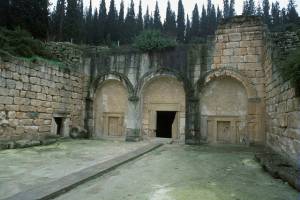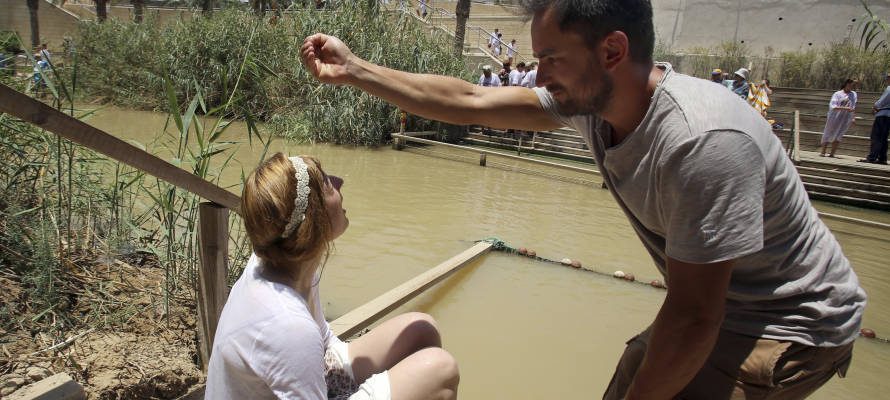UNESCO designated al-Maghtas in Jordan as a World Heritage Site due to its importance to Christian pilgrims. Israeli officials have rebuked attempts by some in Jordan to politicize the decision, which did not address a competing tradition placing the site of Jesus’s baptism in Judea.
UNESCO designated al-Maghtas in Jordan, one of the potential sites of the baptism of Jesus of Nazareth, as a World Heritage Site. The cultural body did not address a competing tradition that places the site at Qasr al-Yahud on the west bank of the river, which is under Israeli control. Neither Israeli nor Palestinian officials have publicly objected to the unequal treatment.
The New Testament says that Jesus was baptized at “Bethany Beyond the Jordan.” One tradition places Bethany at al-Maghtas, whose name means “the baptism” in Arabic. The Catholic Church, the Greek Orthodox Church, and the Lutheran Church, among other denominations, submitted letters to UNESCO in support of designating al-Maghtas a World Heritage site. The site includes “two distinct areas: Tel Al-Kharrar, also known as Jabal Mar-Elias (Elijah’s Hill) and the area of the churches of Saint John the Baptist near the river,” according to the UNESCO press release.
However, another tradition places Bethany directly across the river at Qasr al-Yahud. A spokesman for the Greek Orthodox patriarchy in Jerusalem, Issa Musleh, told the AP that his denomination considers both sites to be holy. He noted that worshippers on both sides of the river meet in the middle during Epiphany celebrations.
Jordan hopes that the UNESCO designation will help tourism. At present, al-Maghtas receives 100,000 pilgrims annually, while Qasr al-Yahud receives 300,000. The two sites have become politicized in Jordan. When Israel reopened Qasr al-Yahud to pilgrims in 2011 after it had been closed for decades, some in Jordan claimed that Israel was attempting to rewrite history in order to attract tourists.

Beit Shearim was recently declared a UNESCO World Heritage Site. (Doron Horowitz/Flash90)
The UNESCO decision has similarly been politicized. “Since the site was discovered, Israel has not stopped trying to deal it and attribute it to the occupied side of the Jordan River,” said the Jordanian newspaper, al-Rai. “This despite the religious and historical documents that prove that the baptism of Jesus, peace be unto him, is on the Jordanian side of the Jordan River.”
Archaeologists and historians deny that such documents exist. The UNESCO decision “has nothing to do with archaeological reality,” Jodi Magness, an archaeologist at the University of North Carolina at Chapel Hill, told the AP. “We don’t have any sites with evidence or archaeological remains that were continuously venerated from the first century on.”
Israeli officials interviewed by Ynet described the newspaper report as “pure anti-Israeli propaganda,” and indicated good relations between the Israeli and Jordanian delegations to UNESCO. For example, the Jordanian ambassador was among the first to congratulate Israel on the inscription of Beit Shearim as a UNESCO World Heritage Site.
By: Sara Abramowicz, United with Israel
